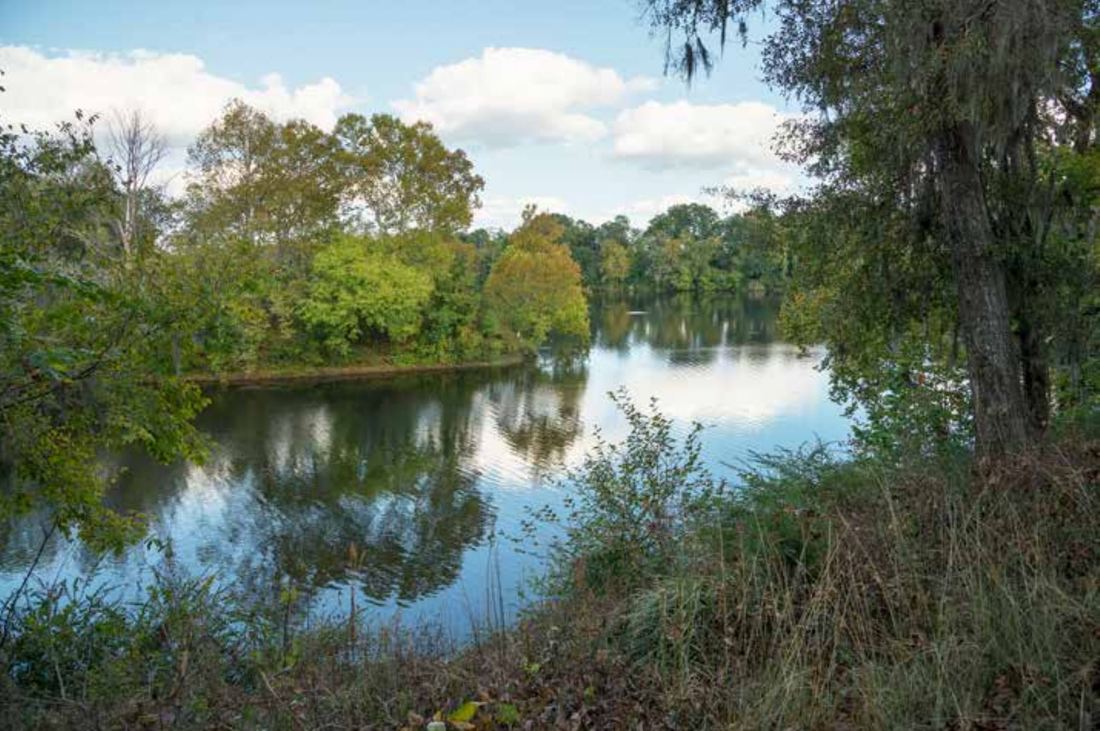
Governor Bibb surprised the territorial legislature by proposing the confluence of the Alabama and Cahaba Rivers (above), at the time an undeveloped wilderness, as the site of Alabama’s state capital. The site proved to be problematic as it was prone to flooding and occasional outbreaks of yellow fever. In 1825 Tuscaloosa was named as the new state capital. (Robin McDonald)
In the late summer of 1818, a special-ordered seal and press designed for use by the Alabama Territory’s executive office finally arrived in St. Stephens from Philadelphia. The emblem featured a map of the territory showcasing its famed river system, the future state’s literal arteries of commerce. On the surface it seemed a common symbol of unity, highlighting the natural abundance that drew Alabama’s people together and augured a bright future. Viewed another way, however, the seal could be understood to reveal the underlying reasons for the territory’s pervasive sectional and political rivalries that seemed to only grow more pronounced as economic activity increased.
 RSS Feed
RSS Feed